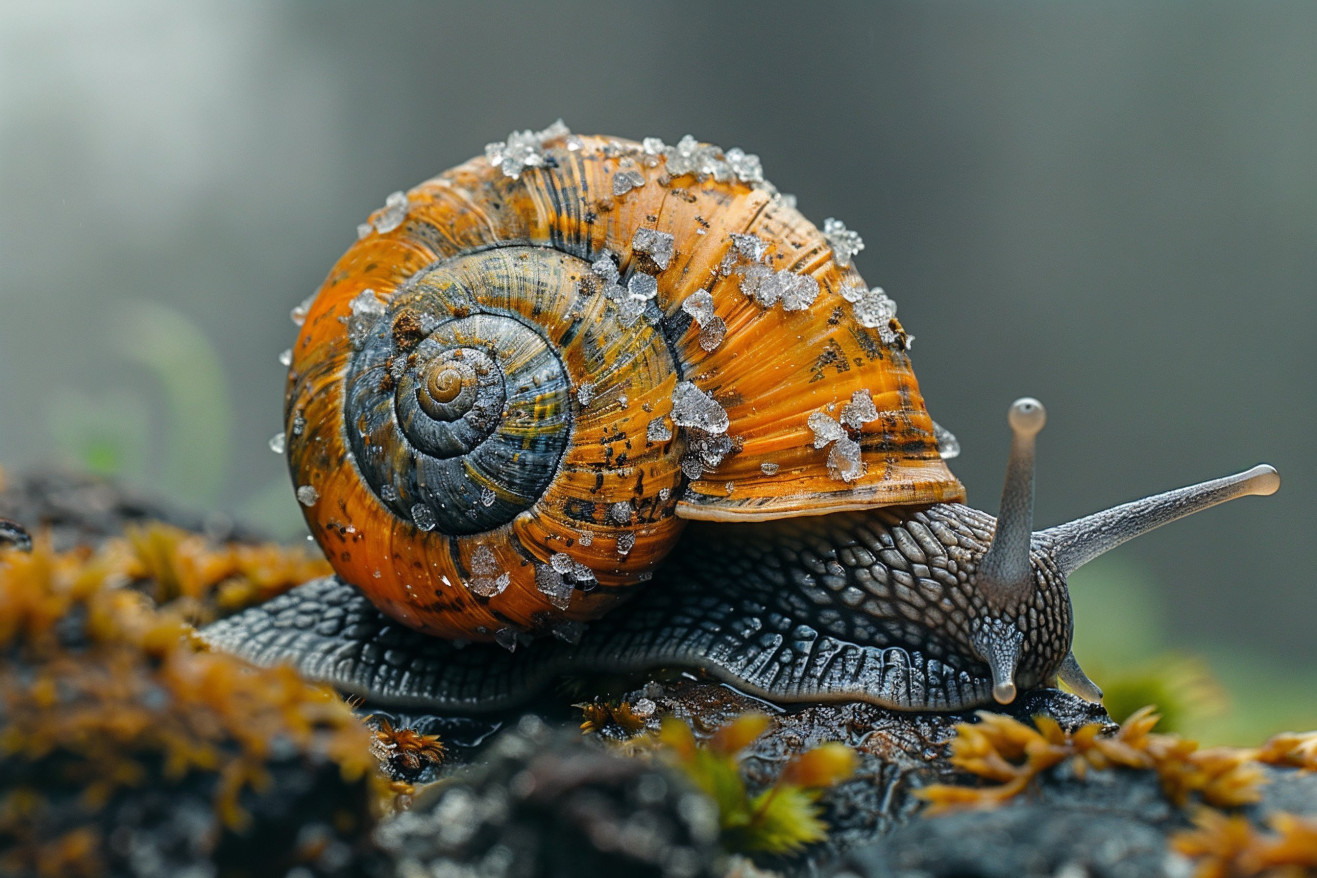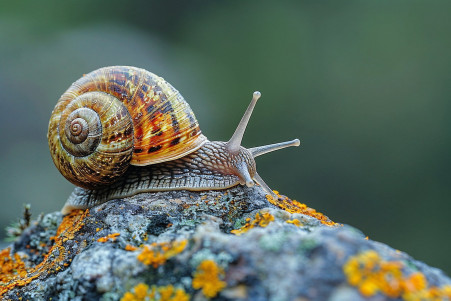Death by Salt: How Salt Kills Slugs and Snails
5 June 2024 • Updated 4 June 2024

Seeing the strange way that salt affects slow-moving snails makes you wonder about the science that makes this odd reaction happen. Salt is a desiccant, which causes the snails and slugs to lose moisture and produce mucus, but why does it happen in a way that kills them? It turns out that the answer is a bit of a mystery, but the evidence suggests that it's a way to keep these slimy creatures away from your garden.
Although the reaction that salt has on these small animals seems extreme, the science behind it is complicated and interesting. To understand it better, we'll look at scientific research from fields like biochemistry, osmosis, and gastropod biology. By reviewing controlled experiments that have looked at snail biology and the properties of salt, we can start to understand how salt's molecular structure interacts with the snail's delicate water balance.
How does salt kill slugs and snails?
How Salt Kills Snails
Osmosis is the movement of water across a semipermeable membrane from an area of high concentration to low concentration. When salt is applied to a snail, it creates a highly concentrated solution that draws water out of the snail's cells through osmosis, as described in this ScienceABC article. This dehydration causes the snail's internal water balance and cellular functions to be disrupted, leading to its death.
The speed of dehydration and the snail's tolerance to it can depend on factors such as the species, age, and other environmental factors. For instance, a study published in BMC Ecology found that earthworms can reduce the damage that slugs cause to plants by improving soil conditions that help plants build up their defenses. This could mean that slugs are more susceptible to certain environments.
As described in a Reddit ELI5 thread, sea snails can survive in the salty ocean because the concentration of salt inside their bodies is balanced with the saltiness of the water around them. However, if they were exposed to a highly concentrated salt solution, they would be dehydrated just like land snails.
Knowing the basics of osmosis and the details of snail biology is important for understanding how exposure to salt is fatal to snails. A study in PMC showed that an invasive snail population was more sensitive to changes in salinity than native populations, which the researchers attributed to the invasive snails adapting to a new habitat with more fluctuations in salinity. This shows how environmental conditions can change a species' tolerance to salt over time.
Differences Between Snail Species and Salt Tolerance
Different species of snails have different levels of sensitivity to salt. For example, a paper in the journal Hydrobiologia reported that the Coxiella genus of gastropods from Australian salt lakes were highly tolerant of extremely high salinity levels, with varying levels of tolerance even seen between species. Meanwhile, a study on the freshwater snail Melanoides tuberculata found that juveniles were more sensitive to higher salinities than adults.
Land snails and slugs are generally more sensitive to salt than aquatic snails. As noted in a Reddit ELI5 thread, sea snails can live in the salty ocean because the salt concentration in their bodies is in equilibrium with the salt concentration in the water around them. A study on the intertidal snail Stramonita brasiliensis discovered that this species is highly tolerant of both hypersaline and hyposaline conditions, which has allowed it to adapt to the intertidal zone's fluctuating salinity.
A snail's salt tolerance can be influenced by a variety of factors, including where it lives, its life stage, and its evolutionary background. For example, a study on the invasive New Zealand mud snail found that populations from high-salinity environments were more salt-tolerant when they were exposed to sudden changes in salinity than populations from freshwater environments. These differences in salt tolerance need to be taken into account when developing ways to control snail and slug populations.
Ethical Alternatives to Killing Snails
Salt may be a good way to keep snails away from certain areas, but it's not the most ethical way to control snail populations. This is because it can cause snails a lot of pain and suffering. Luckily, there are several natural and organic methods that can be used to control snails without causing them unnecessary harm.
According to 10 Best Ways To Control Slugs and Snails Organically, some of the most effective ethical options include using physical barriers like copper tape, abrasive materials like diatomaceous earth, and organic repellents like coffee grounds. The article also suggests attracting natural predators like birds, frogs, and snakes to help keep snails in check in a way that's safe for the environment.
As mentioned in 10 Easy and Effective Ways to Get Rid of Snails in Your Yard, keeping your garden clean and free of hiding places can also help keep snail populations down. These ethical, natural methods offer real ways to control snails without causing them unnecessary harm.
Snails in the Ecosystem
In addition to their role as garden pests, snails have a number of important functions in the environment. According to the Finger Lakes Land Trust, land snails "perform myriads of ecological services that support natural areas" - they eat dead and decaying plant material, which helps break it down and aids in soil creation with their nutrient-dense excrement.
Snails and slugs also act as pollinators, feeding on flowers and moving pollen from one plant to another, as noted in Awesome Wildlife Co's article. In addition, snails are an important food source for many animals, providing nutrients such as calcium and protein, as discussed in Backyard Ecology's post.
Even after a snail has died, its shell can be used as a home for other organisms, as Green Idiom describes. Therefore, it is important to maintain a healthy snail population for the health of gardens and ecosystems. Recognizing the many roles that snails play in the environment is important when considering how to manage snails responsibly.
Finding a Middle Ground: Ethical Snail Control
When it comes to managing snails in gardens and other agricultural settings, it’s important to find a middle ground. While it may be tempting to try to completely eliminate snails from an area, doing so could have negative impacts on the ecosystem. Therefore, ethical snail control involves a combination of humane control methods, such as barriers, organic repellents, and natural predators, and an understanding of the roles that snails play in the environment.
Snails are important members of ecosystems, helping with decomposition, nutrient cycling, and acting as a food source for a wide variety of other animals. By keeping an eye on snail populations and only controlling them when they become a problem, it’s possible to maintain a healthy balance. In the end, ethical snail control is about minimizing harm while still allowing snails to provide their ecological services.


